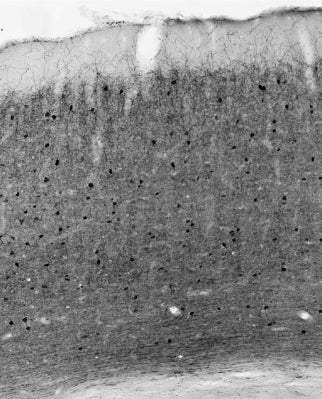Anti-Parvalbumin Antibody (L114/81)
Our Anti-Parvalbumin mouse monoclonal primary antibody from NeuroMab is produced in-house from hybridoma clone L114/81. It detects mouse and rat Parvalbumin, and is purified by Protein A chromatography. It is great for use in AT, IHC, ICC, WB.
Mouse, Rat
AT, ELISA, ICC, IHC, WB
Mouse
SKU: 75-479
Ships: 1-2 business days
Product Details
Parvalbumin
Parvalbumin (PA) is a classical small, mostly cytosolic Ca2+-binding protein of the EF-hand superfamily expressed in vertebrates in a tissue- and cell-specific manner, serving as a magnesium/ calcium buffer (Permyakov EA et al., 2017). Parvalbumin (PV)-expressing interneurons are a class of inhibitory neurons that fire rapid barrages of action potentials, and are accordingly named “fast-spiking” interneurons (Trachtenberg J. 2015).
Purified by Protein A chromatography
1 mg/mL
Monoclonal
L114/81
IgG1
AT, ELISA, ICC, IHC, WB
Mouse
Pvalb Pva
12 kDa
Fusion protein amino acids 1-110 (full-length) of rat Parvalbumin (accession number P02625) produced recombinantly in E. Coli
Rat
Mouse, Rat
AB_2728742
Aliquot and store at ≤ -20°C for long term storage. For short term storage, store at 2-8°C. For maximum recovery of product, centrifuge the vial prior to removing the cap.
Liquid
Produced by in vitro bioreactor culture of hybridoma line followed by Protein A affinity chromatography. Purified mAbs are >90% specific antibody.
10 mM Tris, 50 mM Sodium Chloride, 0.065% Sodium Azide pH 7.125
Unconjugated
No cross-reactivity reported
Each new lot of antibody is quality control tested by western blot on rat whole brain lysate and confirmed to stain the expected molecular weight band.
These antibodies are to be used as research laboratory reagents and are not for use as diagnostic or therapeutic reagents in humans.
United States
24 months from date of receipt
Parvalbumin alpha
Shipped on ice packs
Product Specific References for Applications and Species
- Immunohistochemistry: Mouse
| Immunohistochemistry: Mouse | ||
| PMID | Dilution | Publication |
| 39103318 | 1:200 | Han, X., et al. 2024. Multiplexed volumetric CLEM enabled by scFvs provides insights into the cytology of cerebellar cortex. Nature Communications, 6648. |
| 37833406 | not listed | Ma, D, et al. 2023. A cytoskeleton-membrane interaction conserved in fast-spiking neurons controls movement, emotion, and memory. Molecular psychiatry, . |


![Immunoblot against crude membranes from whole mouse (MBM) or rat (RBM) brain and from human hippocampus [HBM(H)], cerebral cortex [HBM(Cx)] or cerebellum [HBM(Cb)] probed with L114/81 (left) or N52A/42 (right) TC supe.](http://www.antibodiesinc.com/cdn/shop/files/73-479-l114-81-wb-1_120x120.jpg?v=1704393935)




